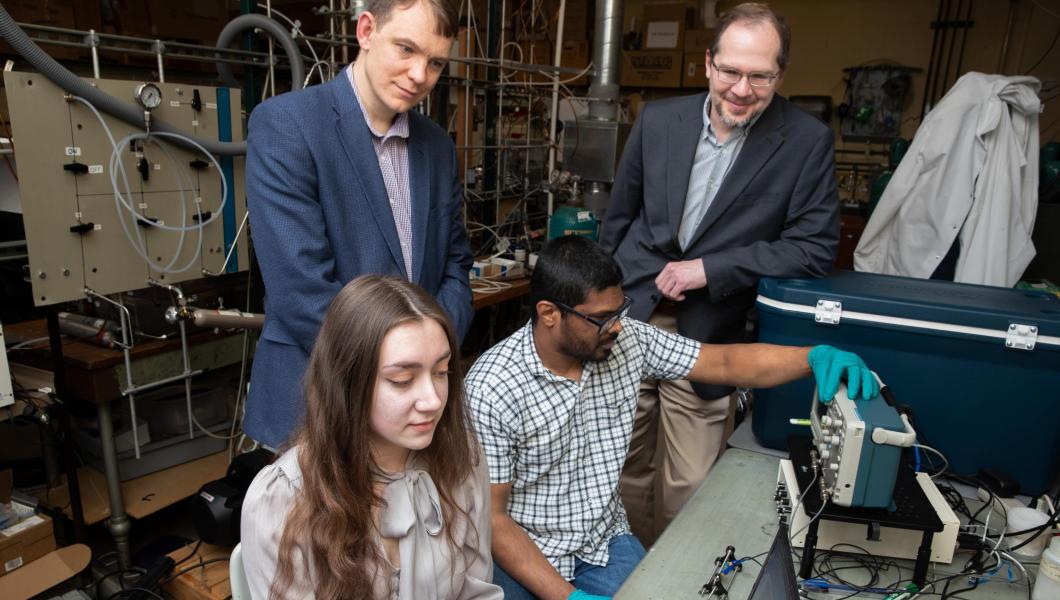NJIT Workshop Introduces New Jersey Teachers To World of Fantasy RPG Education

Each day, millions of gamers log online to spend their free time playing Blizzard Entertainment’s popular video game title, “World of Warcraft” — a virtual, open-box-styled “land of myth, magic and legendary adventure.”
However, the immersive nature of fantasy role-playing video games — similar to that of "World of Warcraft" — has been expanding to classroom education as well.
This month, NJIT’s Collaborative for Leadership, Education, and Assessment Research (CLEAR) and the collaborative's LiFE project, hosted a professional workshop exploring how elements of role-playing video games (RPGs) are being used in classrooms to promote collaboration and communication among today’s students.
Company representatives of one such new approach to gamifying education, called “Classcraft,” met with New Jersey educators, administrators and student game developers at NJIT, to introduce their RPG-based educational program that “turns a class into a game for a whole school year” — complete with Warcraft-style avatars, interactive student-team quests based on Health Points (HP) and Experience Points (XP), and of course, rewards to level-up.
Currently, Classcraft estimates that its program is used in 75 countries, including 160,000 classrooms in the United States.
“We want to meet today’s kids at their level…and most of our kids are already gamers, whether we like it or not,” said Kinshasa Msola-Marshall, Classcraft learning specialist, who presented at the event. “By gamifying our lessons in the way we have, we are seeing that it makes students more motivated and more engaged.”
“It’s exciting to experience this gaming approach hands-on,” said Christine Lion-Bailey, Morris Plains School District’s director of technology and innovation, who attended the workshop. “As a district, we are trying to find out how to help some teachers who may not necessarily be big gamers, and make them comfortable with the concept of using gaming to engage students.”
In the world of Classcraft, student teams, or “guilds” use characters — such as warriors, mages and healers — to collaborate and solve game challenges introduced by their teacher on a classroom screen over the course of the school day. If successful, students earn XP points, which they can trade in for leveling up their character and earning special “abilities”, such as classroom music privileges.
While Classcraft functions as both a game and educational tool for students, teachers can use the program to assess student performance and outcomes in real-time using the “Classcraft School Climate Index”, which gauges analytics data such as the ratio of positive vs. negative behaviors, absenteeism and collaboration.
“As a former teacher, it took a lot of pressure off me having this behavior management aspect of the game in place because it meant that the class rules were already defined by the game for students,” said Msola-Marshall. “If I deduct health points from a team’s character for being loud in class, the kids understand why, and I’m not looked at as the bad cop for penalizing them.”
For attendees at the workshop, the main event featured hands-on training sessions within a Classcraft environment, which ranged from learning how to complete quests and upgrade characters, to tutorials for how to present events as a classroom’s game master. For Lion-Bailey, the event was an opportunity to learn a new approach to engage their students, nearly all of whom have embraced modern gaming culture. According to a 2018 Pew Center survey, nine-in-ten students, ages 13 to 17, play video games of some kind — either by way of computer, game console or cellphone.
“I think that this is the new way to engage students,” said Lion-Bailey. “Even being a non-gamer myself, I love the fact that I can upgrade my character…it gives me a personal ownership over what I am learning in the game.”
“In the bigger picture, we have looked more closely at what our kids’ real interests are so that they are invested in what they are learning about,” added Lion-Bailey. “We have built a virtual reality lab in our district and are trying to start an eSports program, recognizing that gaming is an untapped avenue for many students in the K-12 arena right now, and noticing that colleges are now supporting eSports with scholarship money. We want to give our students opportunity just like our athletes, so this falls in line with the idea of using gaming for student engagement.”

